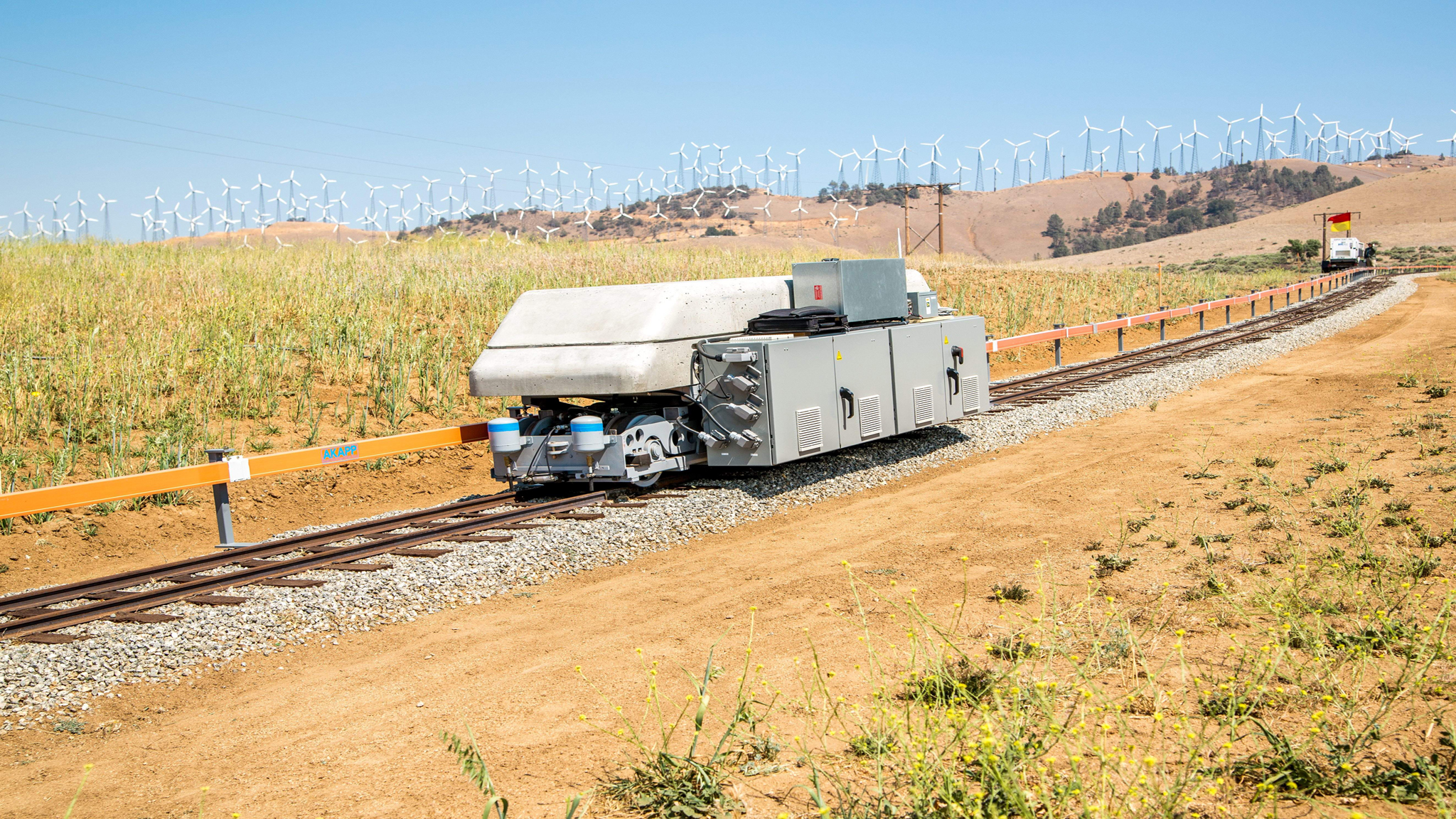In Greek mythology, the story of Sisyphus endlessly rolling a boulder uphill is meant to be a cautionary tale. Gravity, in this case, worked against the poor chump. But the smart folks at Advanced Rail Energy Storage North America (ARES) asked: Why not make gravity your friend?
ARES has pioneered a train full of rocks that climbs up a hill, only to roll back down again and repeat the process, Sisyphus style. But instead of a metaphor of futility, this new train technology offers a breakthrough opportunity in clean energy storage.
It isn’t easy to find feasible solutions for storing grid-scale renewable energy loads for when the sun isn’t shining or the wind isn’t blowing. Pumping water through turbines only returns about 70 percent on energy inputs, while the big battery business comes with its own set of environmental and cost concerns.
That’s what makes the ARES technology all the more exciting. The group repurposed train cars originally meant for (ironically) Australian ore mining to use gravity and friction to store renewables. Each car can haul up to 230 tons of rock up a hill (heavier is better since it will generate more energy when it inevitably rolls downhill).
Here’s how it works: When electricity is at low demand, surplus energy gets sent from the grid to power a chain that hauls the weighted rail cars uphill. Then, when energy demand climbs, the train car’s motor becomes a generator as it rolls downhill, and the momentum pushes the stored energy back through the grid via regenerative braking. Scientific American reports:
“They go up, they go down, Slinky fashion,” said Francesca Cava, chief operating officer at Advanced Rail Energy Storage North America, the company behind the Nevada project. “For the most part, the technology we’re using is over a hundred years old — we’re not waiting for any scientific breakthroughs to be profitable.”
The benefits are that it’s less expensive than other storage solutions like pumping hydro through turbines, and it has a small environmental footprint — no water, no emissions, and no synthetic methane needed. ARES says that the energy stored can stabilize the grid and help make the power generated by renewables less intermittent.
The new railcars have been piloted in California, which recently approved a plan to use energy storing technologies to meet the goal of having 33 percent of its power supply from renewable sources by the year 2020. Now ARES has big plans for a large-scale commercial venture that could help the state get on track with its energy-on-demand needs. If this pilot program is successful, other states and countries could soon be riding this gravy train to clean energy storage.



